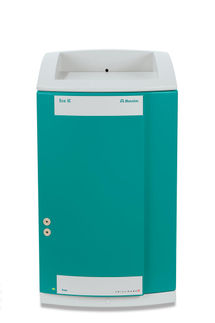To use all functions of this page, please activate cookies in your browser.
my.chemeurope.com
With an accout for my.chemeurope.com you can always see everything at a glance – and you can configure your own website and individual newsletter.
- My watch list
- My saved searches
- My saved topics
- My newsletter
Spectral resolutionThe spectral resolution or resolving power of say a spectrograph, or, more generally, of a frequency spectrum, is a measure of its power to resolve features, say in the electromagnetic spectrum. It is usually defined by Product highlightR = λ / Δλ, where Δλ is the smallest difference in wavelengths that can be distinguished, at a wavelength of λ. So, for example, the Space Telescope Imaging Spectrograph (STIS) can distinguish features 0.17 nm apart at a wavelength of 1000 nm, giving it a resolving power of about 5,900. The spectral resolution can also be expressed in terms of physical quantities, say velocity; then it describes the difference between velocities Δv that can be distinguished through the Doppler effect. Then, the definition is R = c / Δv, where c is the speed of light. The STIS example above then has a spectral resolution of 51 kilometres per second. ReferencesHatim
|
| This article is licensed under the GNU Free Documentation License. It uses material from the Wikipedia article "Spectral_resolution". A list of authors is available in Wikipedia. |







